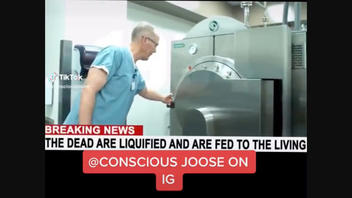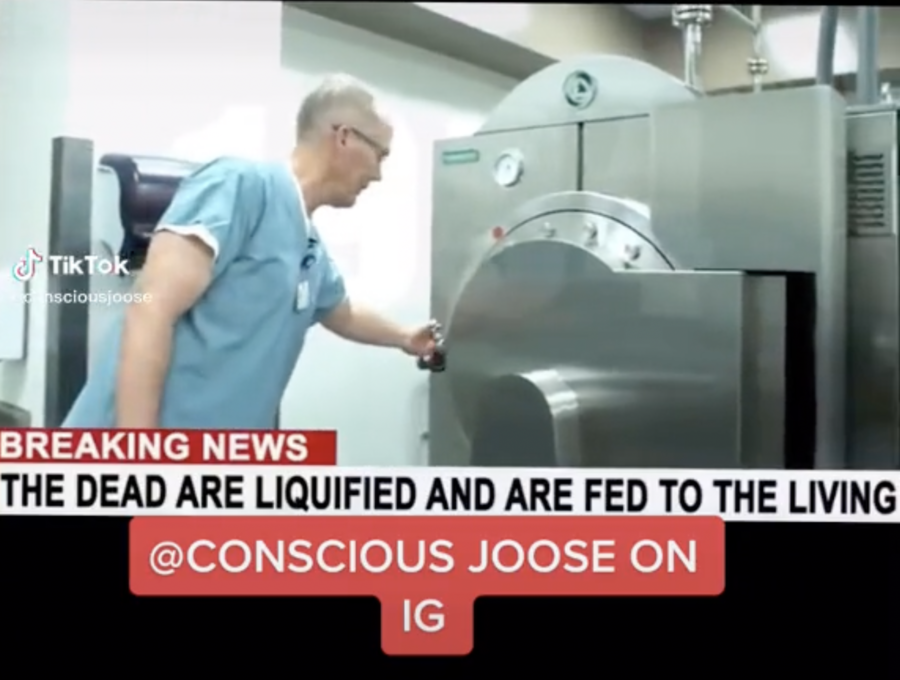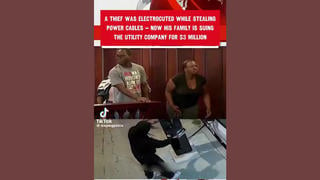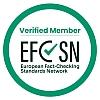STORY UPDATED: check for updates below.

Are unsterile human remains processed by aquamation and being pulverized into a powder that is drained into local water supplies? No, that's not true: Bones are made into sterile ash, similar to that resulting from traditional flame cremation, and given to family members or laid to rest. A sterile effluent, or wastewater liquid, is a resulting byproduct that is drained into wastewater systems, but it does not contain human tissue or DNA and is subject to municipal filtration and purification regulations. The U.S. Environmental Protection Agency (EPA), the agency that regulates wastewater management, told Lead Stories that it is not aware of any connection between untreated waste from alkaline hydrolysis cremation facilities and drinking water systems.
Aquamation -- also known as alkaline hydrolysis or water cremation -- is a cremation process that uses chemicals and water to mimic the natural decomposition of the human body during burial.
The claim originated in a nearly three-minute video shared to TikTok on March 17, 2023, with a text overlay that read, "BREAKING NEWS: THE DEAD ARE LIQUIFIED AND FED TO THE LIVING." A voiceover narration that accompanied the video said, in part:
When they're feeding the dead to the living you know the end is near. Check out this death chamber, this washing machine. They call it aquamation, where they liquify the dead and then dump the remains down the drain to be recycled into municipal water supply. And so people are drinking it, they're showering in it, they're doing their laundry in it. This is happening in most states across the country and most major cities. They're recycling dead people and feeding it to the living.
What does that mean exactly? And they're grinding up the bones into powder. They call this calcium phosphate, which is going to be used for food processing, undoubtedly. Maybe in your vitamins ...
Below is how the post appeared at the time of writing:
(Source: TikTok screenshot taken Weds March 22 08:30:25 UTC 2023)
A reverse image search revealed that the clip on TikTok was spliced from an authentic video interview with Dean Fisher, former director of the Donated Body Program at UCLA. The authentic video interview was published by The Daily Mail on September 18, 2017 (archived here). In the original video, Fisher provided an overview of machines used during the alkaline hydrolysis, or biocremation, process.
In the altered video posted on TikTok, the original audio track has been replaced with an unidentified narrator and ominous music.
The claims made in the altered video posted on TikTok are "not at all accurate," Jessica Koth of the National Funeral Directors Association told Lead Stories in an email received on March 22, 2023.
"The fluid that remains at the end of the process is sterile and contains water, salt, sugars, amino acids and peptides. It is completely safe to dispose of in municipal sewer systems," Koth told Lead Stories. Her organization includes professional funeral directors, morticians and embalmers.
"The narrator implies that bones are used in consumable products (e.g., vitamins). That is false. The bones that remain at the end of the process are indeed pulverized; however, they are given to the family, much like the pulverized bones (cremated remains) are given to families after traditional flame-based cremation."
In an email to Lead Stories received March 24, 2023, an EPA spokesperson confirmed that the agency "is not aware of any direct connections of untreated waste from alkaline hydrolysis cremation facilities directly into a drinking water plant."
The EPA is also unaware of any alkaline hydrolysis byproducts, including the mineral constituents of bones and teeth, being used in any drinking water treatment process.
"Wastewater is a result of a combination of industry, municipal, residential, and commercial activities, all with different practices that would result in different contaminants in the wastewater," wrote the spokesperson.
"EPA regulates the treatment and the final concentrations of contaminants in the effluent [treated wastewater] to protect public health, ecosystems, and water quality. Treated wastewater must meet EPA standards before it is released into surface waters."
Alkaline hydrolysis mimics the natural decomposition processes that occur during burial, notes the Mayo Clinic, which uses the process to cremate whole-body program donors. Human remains are placed into an air- and watertight single-chamber alkaline hydrolysis machine that holds approximately 100 gallons of a solution made of 95 percent water and 5 percent potassium hydroxide. Over three to 16 hours, body tissue is broken down using this solution alongside heat, pressure and agitation.
Remaining products include bones, which are then pulverized into ash, and a sterile liquid waste known as effluent, according to UCLA Health, which uses alkaline hydrolysis for the cremation of donated bodies. There is no DNA or tissue left after the process is completed, the Cremation Association of North America (CANA) says.
Though alkaline hydrolysis was first used in the human funeral industry in 2011, the practice was patented in 1888 by farmer Amos Herbert Hanson to decompose animal carcasses. U.S. Funerals Online reports that at least 28 states have legalized the process, though not all of these states have funeral homes that offer alkaline hydrolysis.
In addition to human cremation, alkaline hydrolysis is also used to sterilize household and laboratory wastewater as it destroys microbiological agents and pathogens, reports the waste treatment manufacturer BioSAFE Engineering. The practice is also recommended by the Environmental Protection Agency to manage animal carcass waste and is described by the agency as one of the few technologies capable of deactivating prions, which are believed to cause diseases like mad cow disease.
As Lead Stories previously reported in May 2021, material from aquamation is not being spread on food crops.
Lead Stories reached out to Dean Fisher, who is the man explaining the process in the original video, for comment on the altered video that uses his image but not his explanation. Fisher responded by email on March 23, 2023, saying the altered video appeared to be by "someone who has way too much time on their hands, or is in direct competition with this technology."
Fisher provided specifics about the process: "Water cremation uses 5% potassium hydroxide (pH 13) and 95% water. We heat the mixture to 302F for a minimum of an hour, so we are destroying pathogens at 60,000 times greater than an autoclave.
"The technology has a much smaller carbon footprint and the leftover water and ash or cremated remains are sterile, contain 25%-30% more calcium phosphate, and have 1/4 the carbon footprint of flame cremation."
Updates:
-
2023-03-23T16:42:31Z 2023-03-23T16:42:31Z Adds comments to Lead Stories from Dean Fisher, former director of the Donated Body Program at UCLA. Adds comments from EPA explaining water treatment.
















